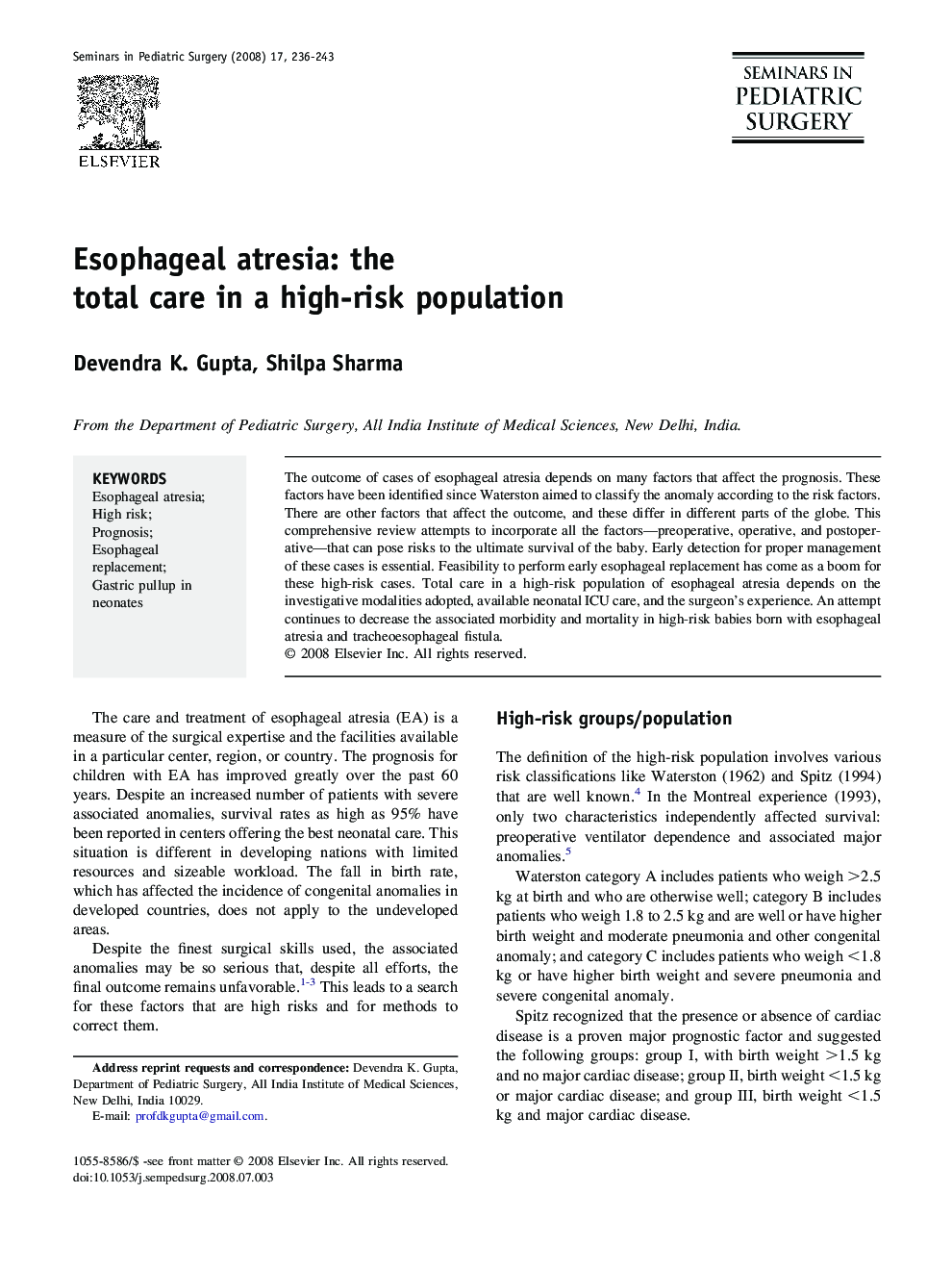| Article ID | Journal | Published Year | Pages | File Type |
|---|---|---|---|---|
| 4176828 | Seminars in Pediatric Surgery | 2008 | 8 Pages |
The outcome of cases of esophageal atresia depends on many factors that affect the prognosis. These factors have been identified since Waterston aimed to classify the anomaly according to the risk factors. There are other factors that affect the outcome, and these differ in different parts of the globe. This comprehensive review attempts to incorporate all the factors—preoperative, operative, and postoperative—that can pose risks to the ultimate survival of the baby. Early detection for proper management of these cases is essential. Feasibility to perform early esophageal replacement has come as a boom for these high-risk cases. Total care in a high-risk population of esophageal atresia depends on the investigative modalities adopted, available neonatal ICU care, and the surgeon's experience. An attempt continues to decrease the associated morbidity and mortality in high-risk babies born with esophageal atresia and tracheoesophageal fistula.
